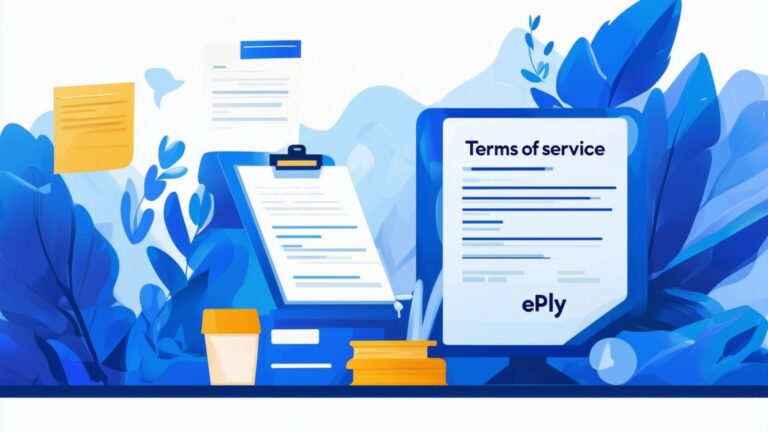6 Steps to Successful Virtual Event Planning
1. Understand your audience
Identify audience demographics
To plan a successful virtual event, it is crucial to first understand the demographics of your audience. Knowing the general psychology of your audience helps in tailoring the event to meet their expectations. Assess their inclination to participate in virtual events and their level of technological competence. This can be achieved by asking questions about their interests, familiarity with social media, and the types of offers they respond to best. Use surveys or discussion forums to gather this information.
Understanding the age, gender, location, and professional background of your audience can provide valuable insights. This demographic data will help you create a more personalized and engaging experience. For instance, younger audiences might prefer more interactive elements, while older professionals might appreciate detailed presentations and Q&A sessions.
Determine audience needs and interests
Once you have identified the demographics, the next step is to determine the specific needs and interests of your audience. This involves understanding what topics they are passionate about and what problems they are looking to solve. Conducting surveys or engaging in direct conversations through discussion forums can provide this information. Knowing their interests will help you in creating content that resonates with them.
Additionally, understanding their level of familiarity with virtual events and technology is essential. Some audiences might be tech-savvy and comfortable with complex platforms, while others might need a more straightforward and user-friendly interface. Tailoring your event to meet these needs will enhance the overall experience and increase participation.
Tailor content to audience preferences
After gathering information about your audience's demographics and interests, the next step is to tailor your content to their preferences. This means creating presentations, workshops, or seminars that address their specific needs and interests. Use the data collected from surveys and forums to guide your content creation process. Ensure that the content is relevant, engaging, and provides value to your audience.
Incorporating interactive elements such as Q&A sessions, polls, and live chats can also enhance engagement. These elements allow the audience to participate actively and feel more connected to the event. By tailoring your content to meet the preferences of your audience, you can create a more impactful and memorable virtual event.
2. Define your format
Choose event type (webinar, workshop, etc.)
Defining the format of your virtual event is a critical step in the planning process. There are various types of virtual events to choose from, including webinars, workshops, trade shows, and seminars. Each format has its unique advantages and can cater to different audience needs. For instance, webinars are great for delivering information to a large audience, while workshops are more interactive and hands-on.
Consider the goals of your event and the preferences of your audience when choosing the format. If your budget allows, you can engage a design company to create a custom theme and appealing visual storyboard. This will help in creating a unique experience that stands out from competitors.
Decide on live or pre-recorded
Another important decision is whether to host a live or pre-recorded event. Live events offer real-time interaction and engagement, allowing the audience to ask questions and participate in discussions. However, they also require more preparation and can be challenging to manage. On the other hand, pre-recorded events provide more control over the content and allow for editing and polishing before the event.
Consider the nature of your content and the preferences of your audience when making this decision. Live events are ideal for interactive sessions and Q&A, while pre-recorded events are suitable for delivering polished presentations and tutorials. Both formats have their advantages, and the choice depends on your specific goals and audience needs.
Interactive elements (Q&A, polls)
Incorporating interactive elements into your virtual event can significantly enhance engagement and participation. Q&A sessions, polls, and live chats are great ways to involve the audience and make them feel more connected to the event. These elements allow the audience to ask questions, share their opinions, and participate in discussions.
Interactive elements also provide valuable feedback and insights that can help you improve future events. Consider using tools and platforms that offer these features and ensure that they are easy to use and accessible to your audience. By incorporating interactive elements, you can create a more engaging and dynamic virtual event experience.
3. Choosing a platform
Evaluate platform features
Choosing the right platform is crucial for the success of your virtual event. There are many live streaming services available, such as Periscope, Facebook Livestream, and YouTube Live. Each platform offers different features and capabilities, so it is important to evaluate them based on your specific needs. Consider factors such as ease of use, scalability, and the ability to integrate interactive elements like Q&A and polls.
Use free trials to conduct tests before the event and familiarize yourself with the basic features. This will help you identify any potential issues and ensure that the platform meets your requirements. Additionally, test the live technical support services to ensure that you can quickly resolve any issues that may arise during the event.
Consider user experience
The user experience is a critical factor in the success of your virtual event. A platform that is difficult to navigate or has a poor user interface can frustrate your audience and reduce engagement. Choose a platform that offers a seamless and intuitive user experience, making it easy for participants to join and interact with the event.
Consider the technical competence of your audience when choosing a platform. If your audience is not very tech-savvy, opt for a platform that is simple and user-friendly. Providing clear instructions and support can also help in enhancing the user experience and ensuring that your audience can fully participate in the event.
Assess technical requirements
Before finalizing a platform, it is important to assess the technical requirements. Ensure that the platform is compatible with the devices and operating systems used by your audience. Check the internet bandwidth requirements and ensure that your audience has access to a stable and high-speed internet connection.
Additionally, consider the technical support provided by the platform. Having access to live technical support can be invaluable in resolving any issues that may arise during the event. Conduct thorough tests and ensure that all technical requirements are met to provide a smooth and seamless virtual event experience.
4. Choosing a host/MC
Identify qualities of a good host
The host or MC plays a crucial role in the success of your virtual event. A good host should be able to speak clearly, engage the audience, and manage the flow of the event. They should be comfortable looking directly at the camera and improvising in case of unexpected events. The host should also be able to answer questions via social media and introduce speakers effectively.
Consider the qualities that are important for your specific event. For instance, if your event involves technical content, the host should have a good understanding of the subject matter. On the other hand, if the event is more interactive, the host should be skilled in engaging the audience and managing discussions.
Consider industry experts
Choosing an industry expert as the host can add credibility and value to your event. Industry experts have the knowledge and experience to provide valuable insights and engage the audience effectively. They can also attract a larger audience and enhance the overall reputation of your event.
Consider reaching out to industry experts who are comfortable with live presentations and have a good on-camera presence. Collaborating with industry experts can also provide networking opportunities and help in building relationships with key stakeholders in your industry.
Prepare the host for the event
Once you have chosen a host, it is important to prepare them for the event. Provide them with a detailed agenda and script, and ensure that they are familiar with the content and flow of the event. Conduct rehearsals and provide feedback to help them improve their delivery and presentation skills.
Additionally, ensure that the host is comfortable with the technical aspects of the platform. Provide training and support to help them navigate the platform and manage interactive elements like Q&A and polls. By preparing the host thoroughly, you can ensure a smooth and professional virtual event experience.
5. Market your event
Create a marketing plan
Marketing is a critical aspect of virtual event planning. A well-thought-out marketing plan can help you reach a larger audience and increase participation. Start by defining your target audience and identifying the channels that are most effective in reaching them. This could include social media, email marketing, and online advertising.
Develop a timeline and schedule for your marketing activities, and ensure that you have a consistent and cohesive message across all channels. Use compelling visuals and engaging content to capture the attention of your audience and encourage them to register for the event.
Utilize social media
Social media is a powerful tool for promoting your virtual event. Use platforms like Facebook, Twitter, LinkedIn, and Instagram to reach a wider audience and generate buzz around your event. Create engaging posts, share updates, and use hashtags to increase visibility.
Consider running paid social media campaigns to target specific demographics and increase registrations. Engage with your audience by responding to comments and messages, and encourage them to share the event with their networks. Social media can also be used to provide real-time updates and engage with participants during the event.
Email marketing strategies
Email marketing is another effective way to promote your virtual event. Create a series of email campaigns to inform your audience about the event, highlight key speakers and sessions, and provide registration details. Use compelling subject lines and engaging content to capture the attention of your audience.
Segment your email list based on demographics and interests to provide personalized and relevant content. Use email automation tools to schedule and manage your campaigns, and track the performance to optimize your strategy. Email marketing can help you build anticipation and ensure that your audience is well-informed and excited about the event.
6. Choosing the time and date
Consider audience time zones
Choosing the right time and date for your virtual event is crucial to ensure maximum participation. Consider the time zones of your audience and choose a time that is convenient for the majority. If your audience is spread across different regions, consider hosting multiple sessions to accommodate different time zones.
Use tools like time zone converters to identify the best time for your event. Communicate the time clearly in your marketing materials and provide reminders to ensure that your audience is aware of the event schedule.
Avoid conflicting events
When choosing the date for your virtual event, it is important to avoid conflicts with other major events or holidays. Check industry calendars and avoid scheduling your event on dates that coincide with other significant events that your audience might be interested in.
Consider the availability of your key speakers and participants, and choose a date that works for them. By avoiding conflicting events, you can ensure that your audience is available and interested in attending your virtual event.
Optimal time for engagement
Choosing the optimal time for engagement is essential for the success of your virtual event. Consider the habits and preferences of your audience when selecting the time. For instance, if your audience consists of working professionals, hosting the event during lunch hours or after work might be more convenient.
Analyze the data from previous events and identify the times when your audience is most active and engaged. Use this information to choose a time that maximizes participation and engagement. By selecting the optimal time, you can ensure a higher level of attendance and a more successful virtual event.







